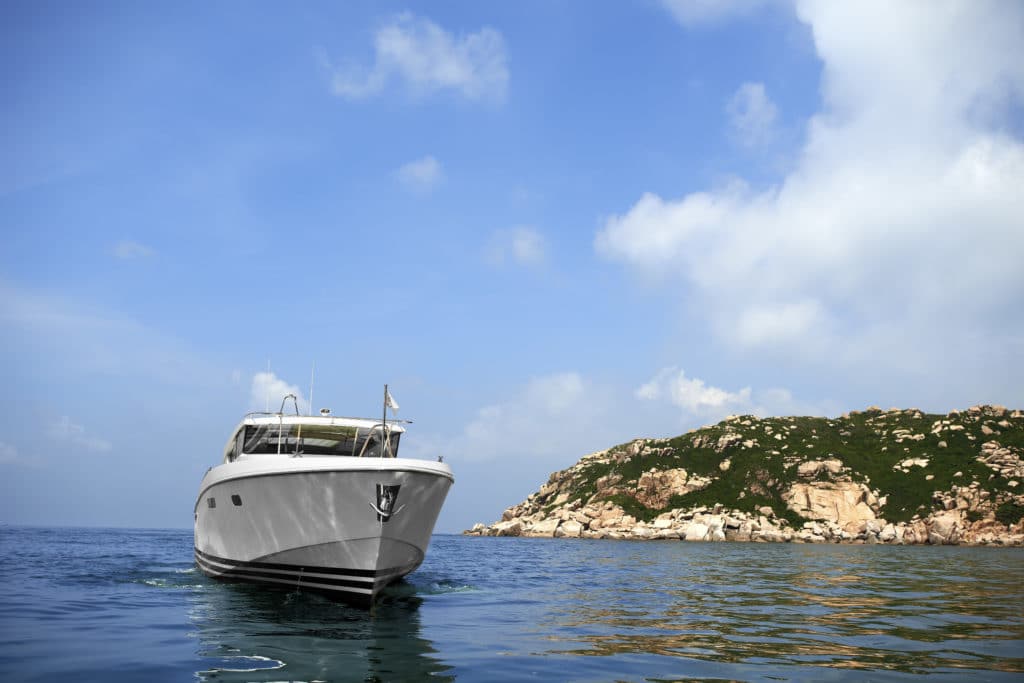
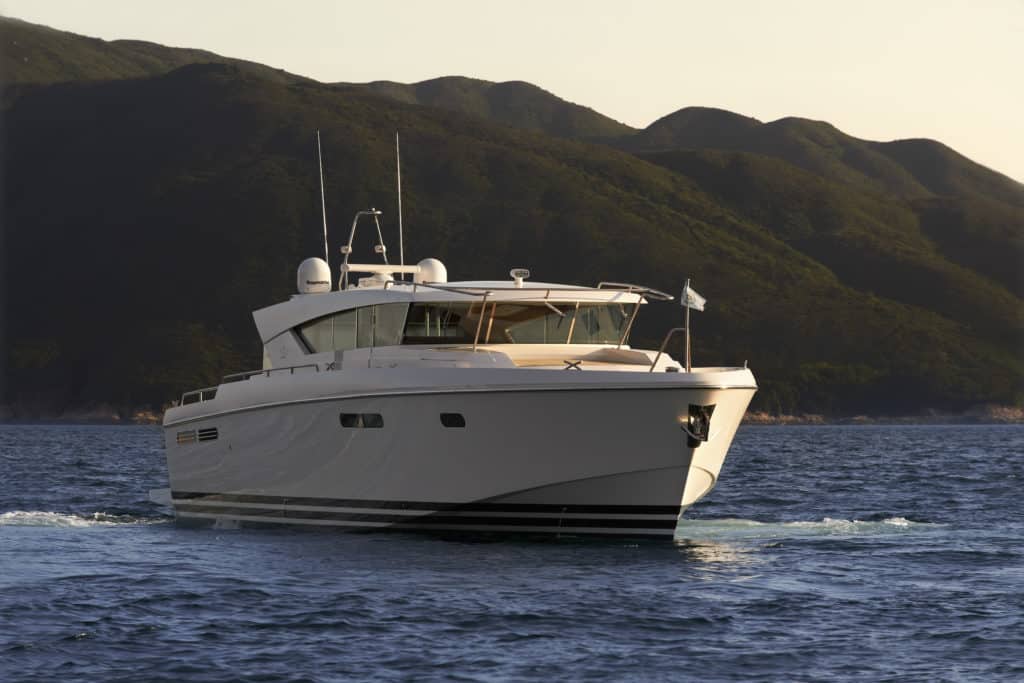
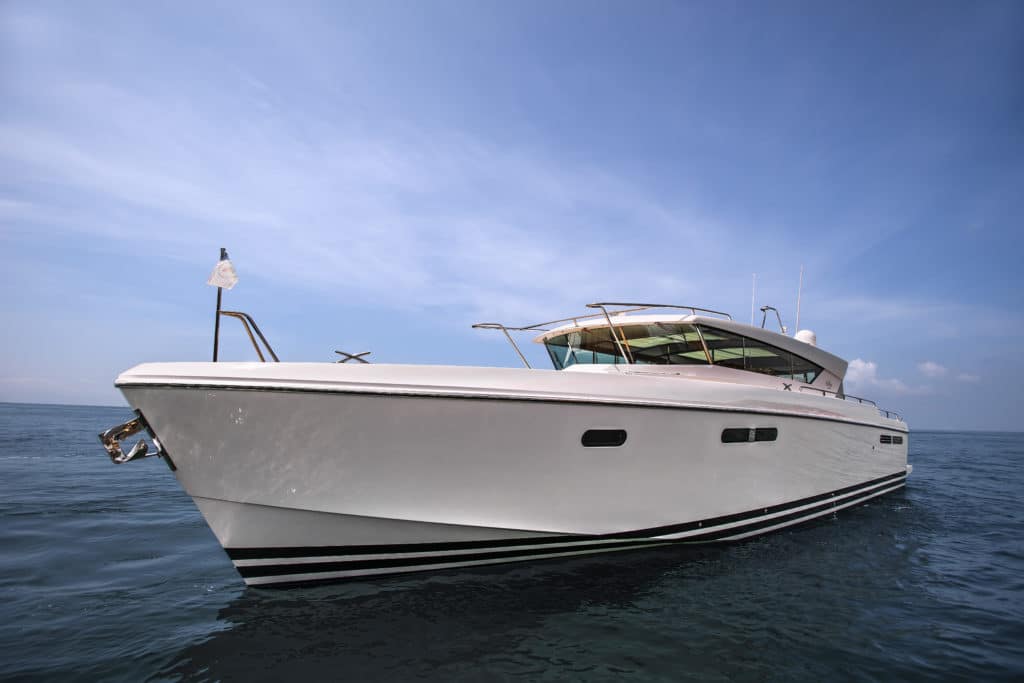
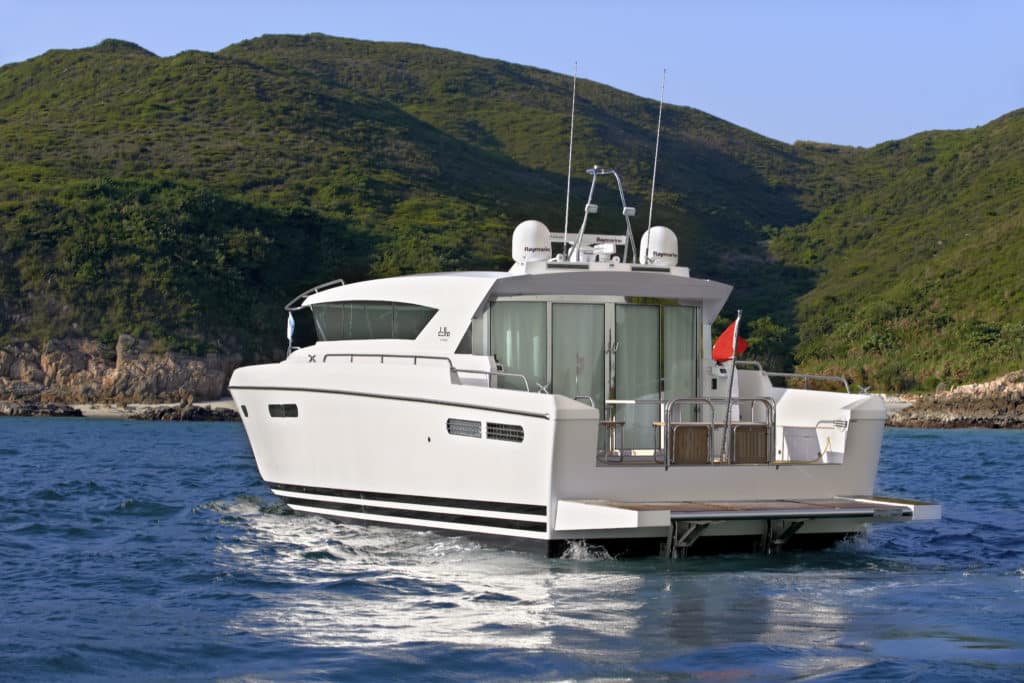
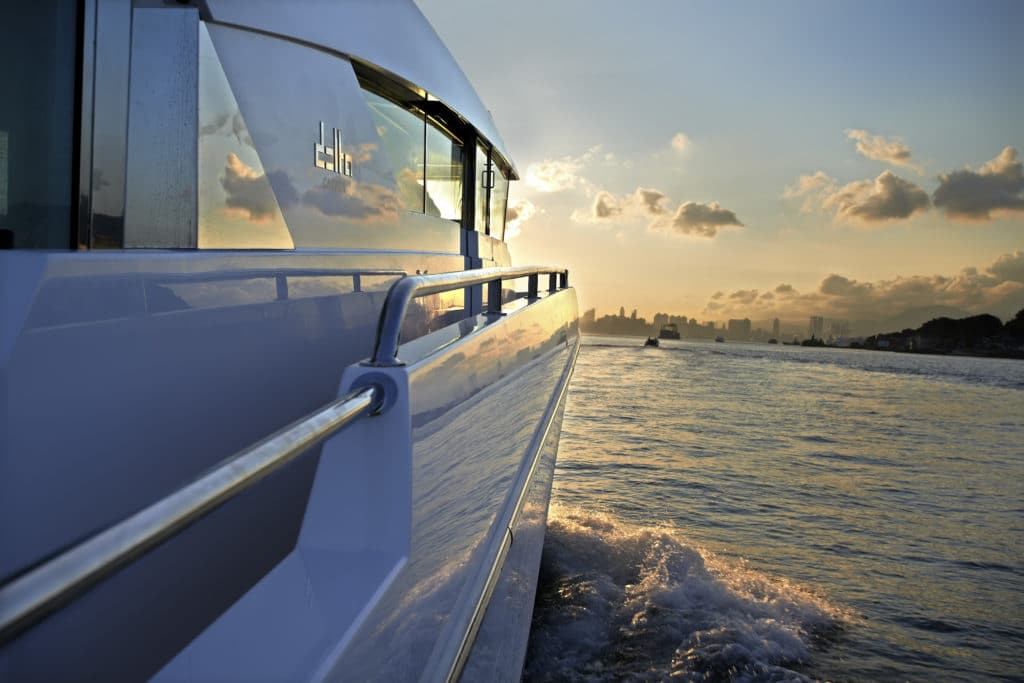
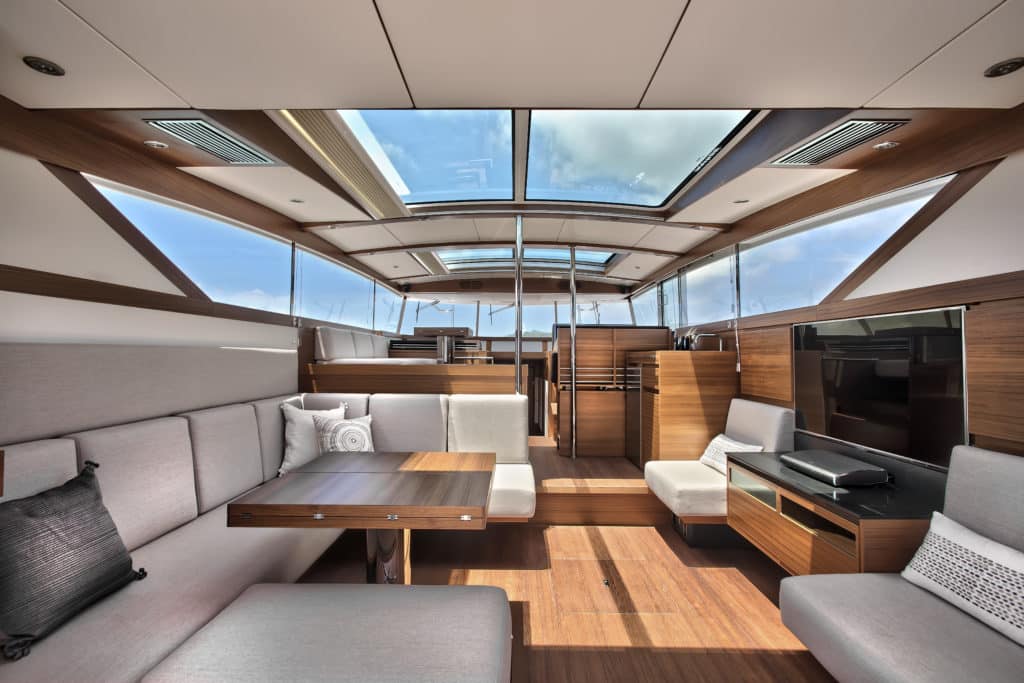
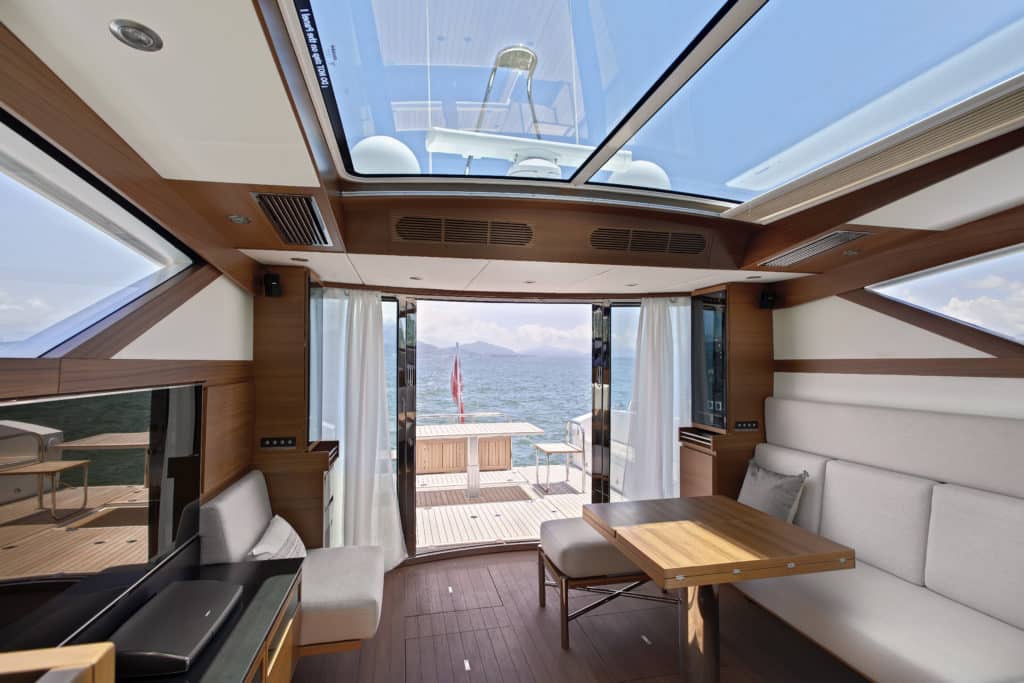
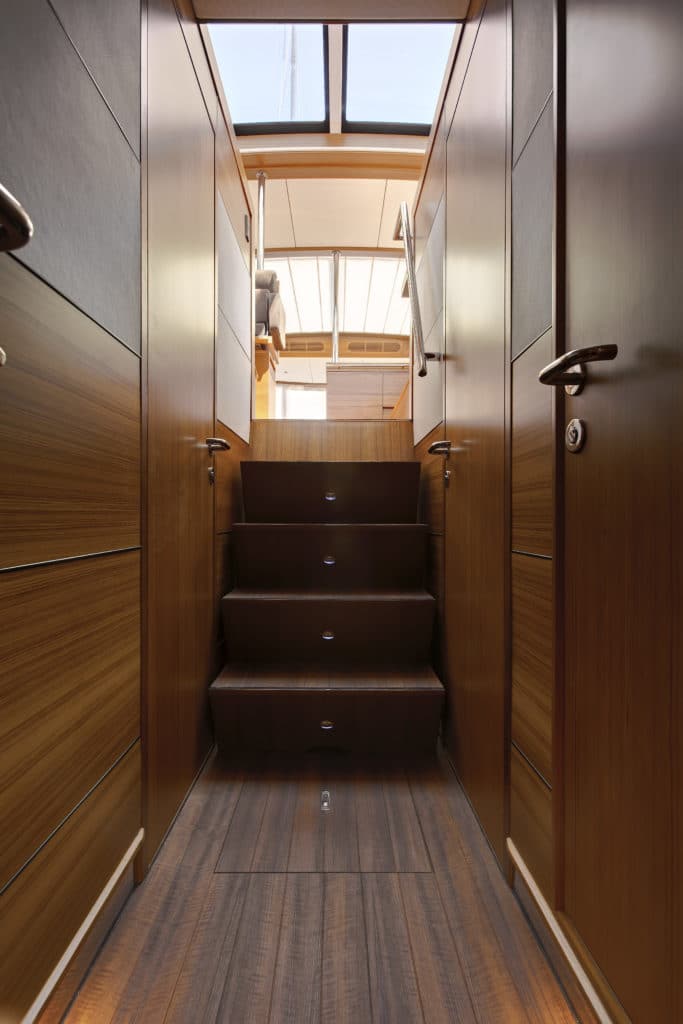
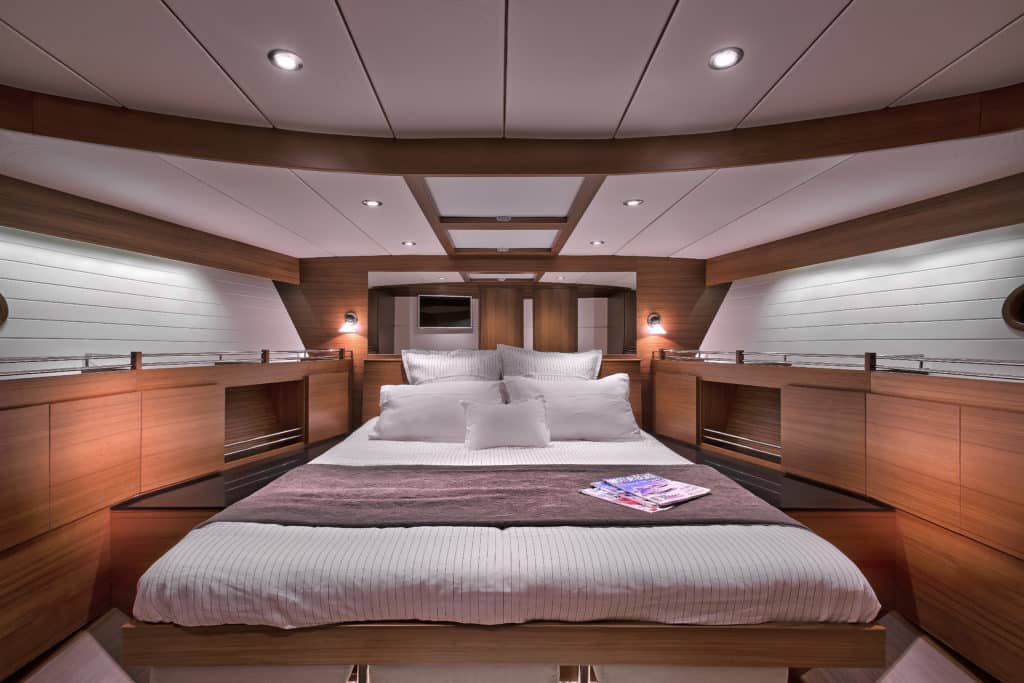
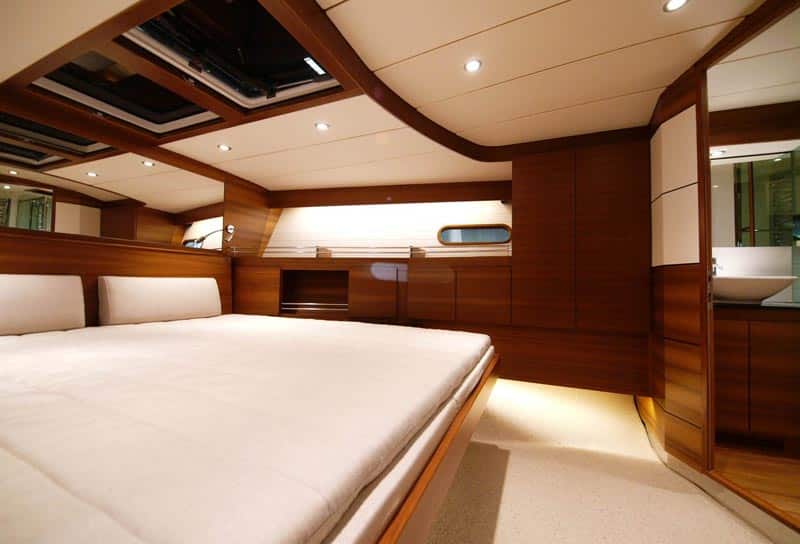
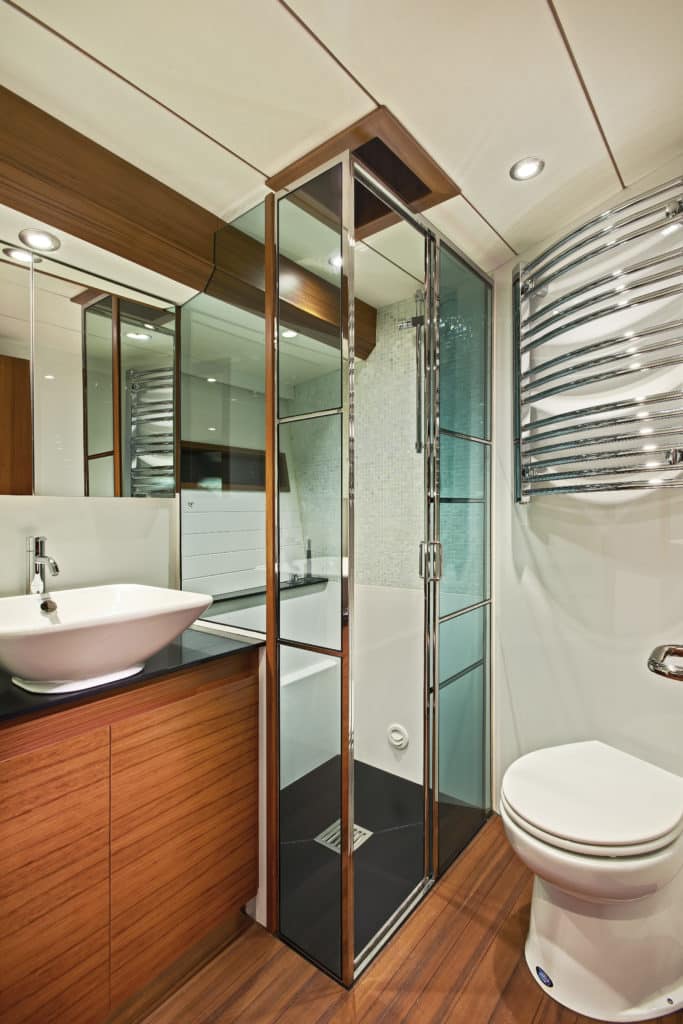
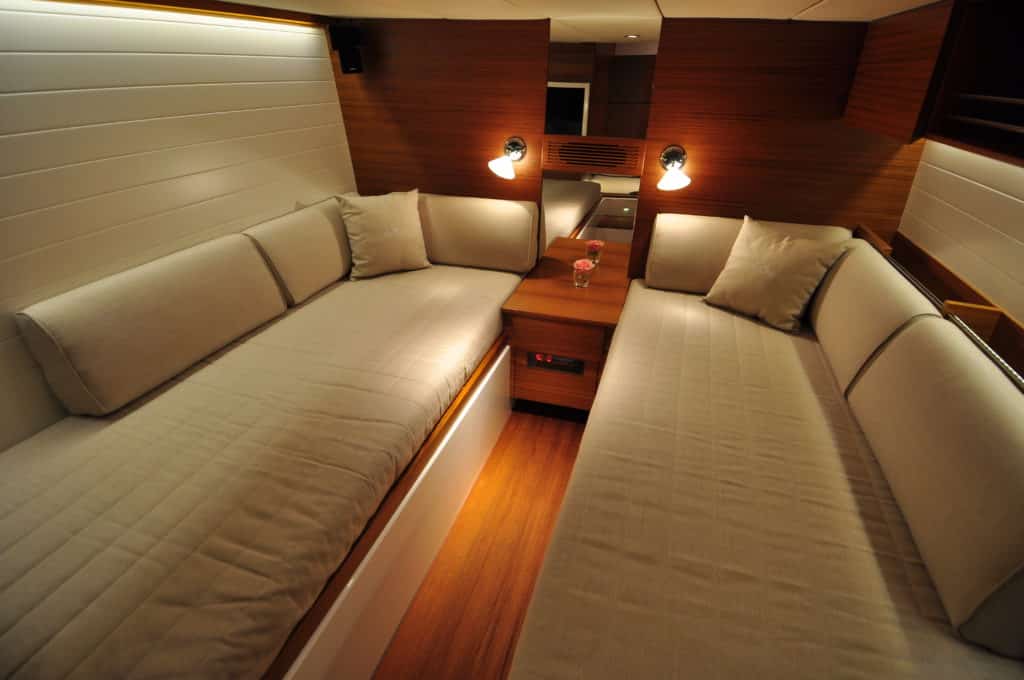
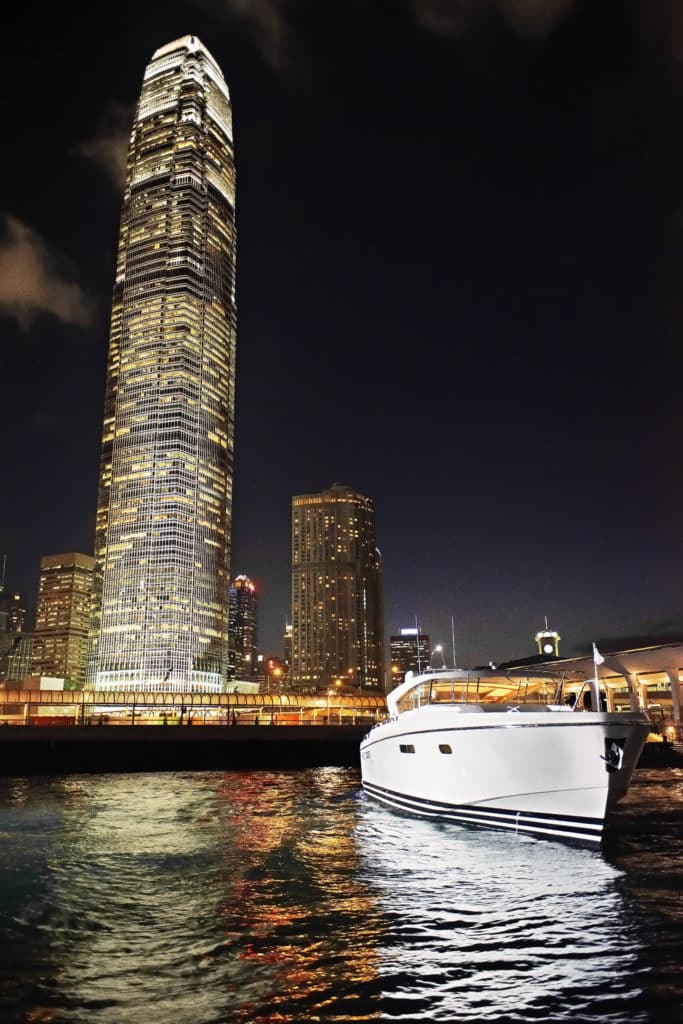
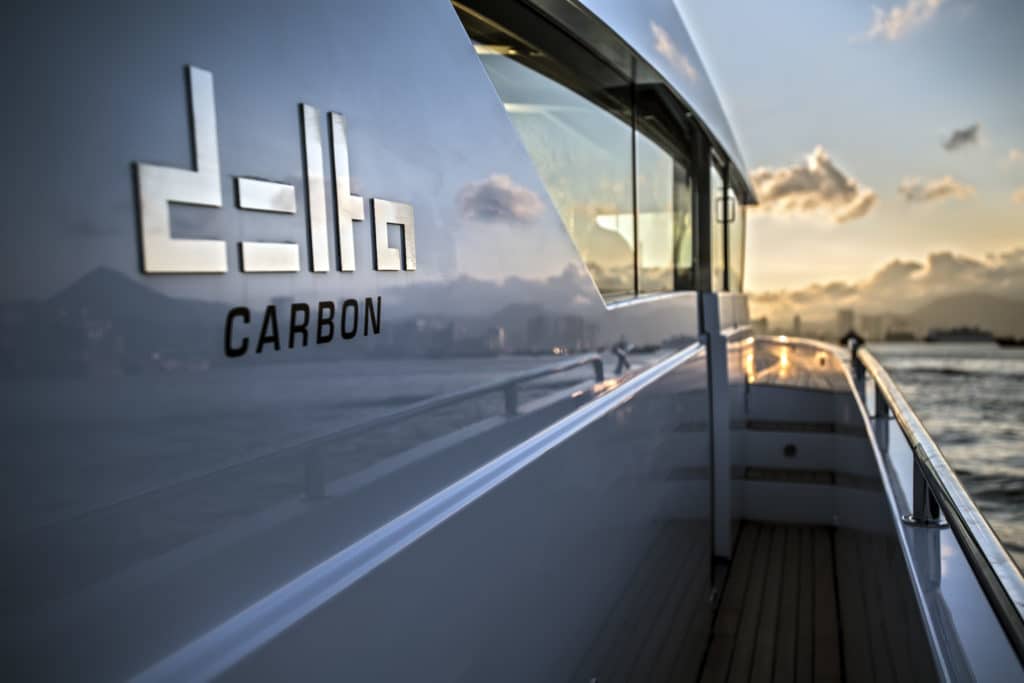
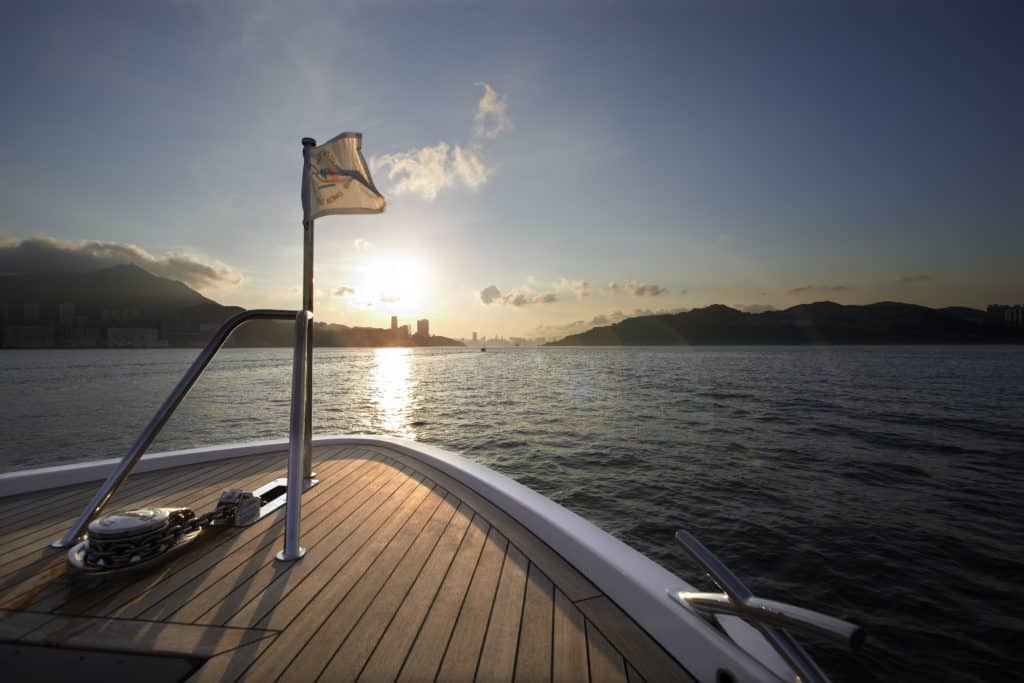
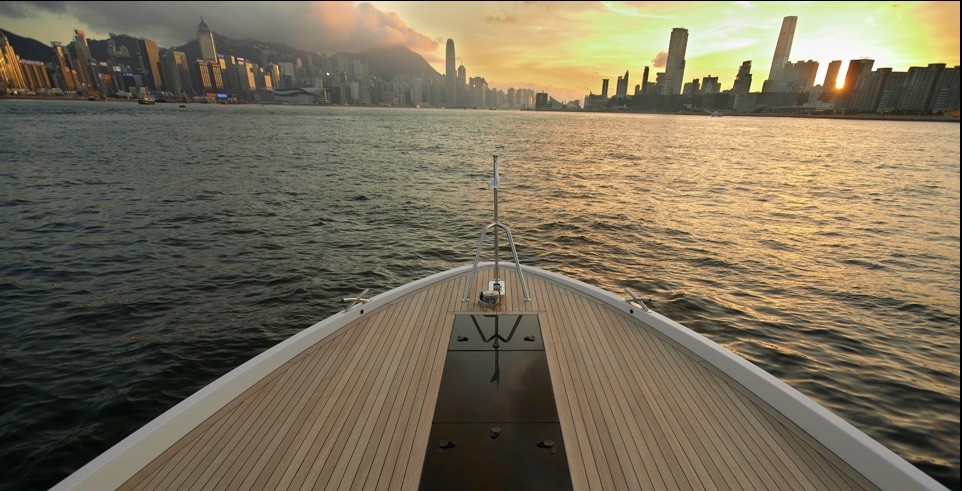
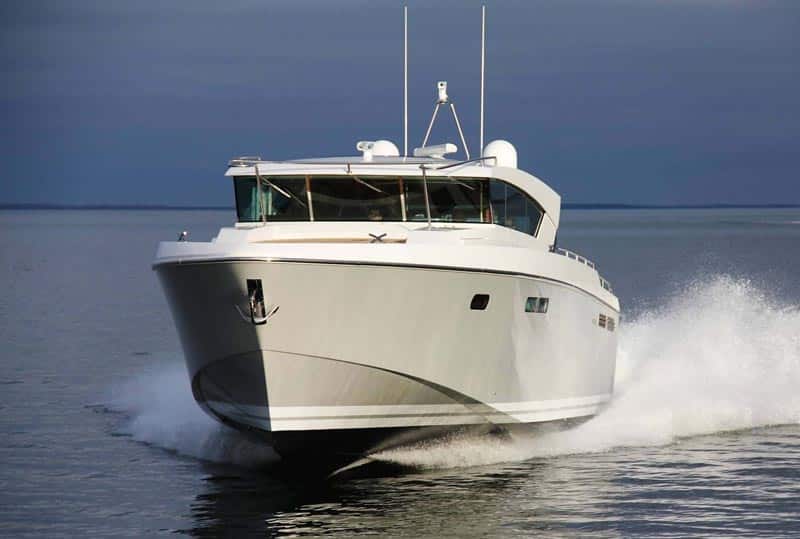
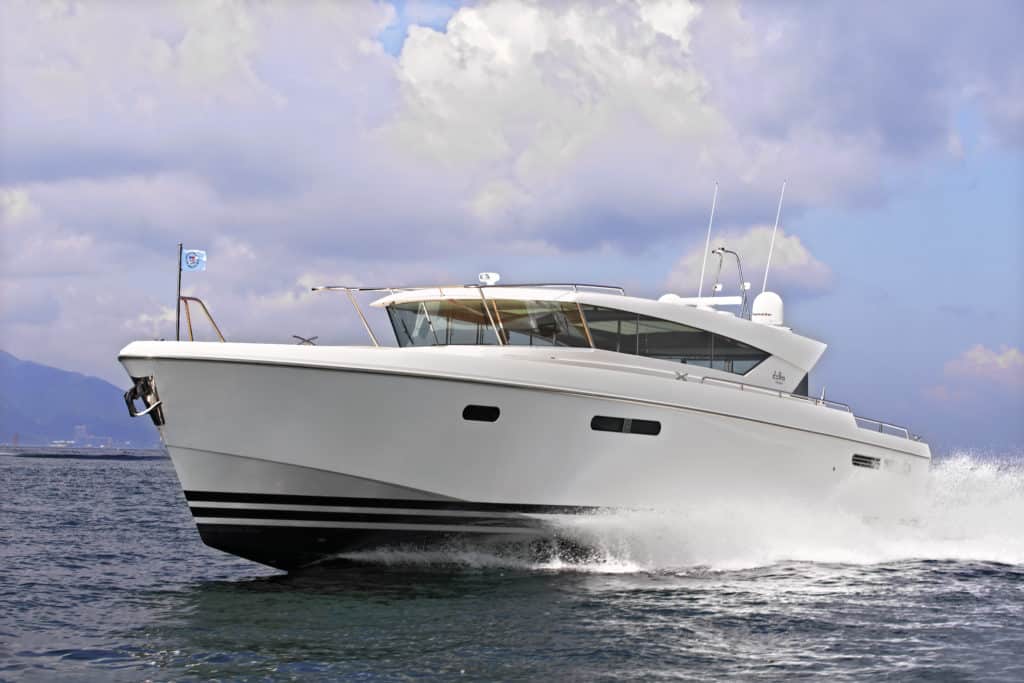
If your first conscious memory is rolling around the salon of a big Hatteras convertible in foul weather, then you’re likely born to be around boats. At least that’s the case for Chapman Ducote, sales director of the Americas for Swedish builder [Delta Powerboats][] . Ducote is a hard-core boat owner, free diver and spearfisherman who’s had everything from a 13-foot Boston Whaler and go-fast craft to large motoryachts and sport-fishermen.
If it floats, Ducote wants to be around it. When this successful entrepreneur and professional race car driver was looking to go into boatbuilding, he wanted to create a vessel that was fast, efficient, multipurpose, high-end and sleek. He desired a yacht that was at home being used as a spearfishing platform in the morning, getting a washdown and then being set up for sunset cocktails at the yacht club or loaded for an extended family cruise through the islands.
After trying unsuccessfully to locate someone to help him design and construct the yacht he saw in his head, he spotted the Delta 54 IPS. Ducote discovered he didn’t need to create a boat from scratch; this builder had already brought her to life, and he wanted to bring the line to the masses.
She first grabs your gaze with a profile that is at once racy and rugged. Her low-profile, reverse-raked pilothouse, with its gently forward-sloping hardtop, appears as a furrowed brow. and, combined with a knifelike bow, is all-weather ready and prepared to dip a shoulder and take on the worst Poseidon can dish out. These elements complement her straight sheer line and minimalist exterior accouterments, which speak to her sophisticated nature.
She first grabs your gaze with a profile that is at once racy and rugged. Her low-profile, reverse-raked pilothouse, with its gently forward-sloping hardtop, appears as a furrowed brow.
The 54’s refinement isn’t limited to outward appearance. She has a high-tech, 21st-century build composed entirely of carbon fiber. Being well aware of the strength, weight savings and overall operating efficiencies gained with using this material in race cars, Ducote was sold. This boat’s hull, deck, bulkheads and hardtop are all carbon fiber that’s vacuum-infused with vinylester resin. Divinycell coring adds strength without additional weight. A finished 54 comes in at just 30,800 pounds (wet), which is comparable to some 40-foot-class, all-fiberglass builds I’ve run. She can go all out using less power and burning less fuel than many same-size and -class vessels.
To that end, my test 54 was equipped with optional triple 435-horsepower Volvo Penta IPS600 diesels. (Twin IPS600s are standard.) On a slightly scalloped Biscayne Bay, Ducote took the wheel, firewalled the single-lever throttles and took us off to the proverbial races. She came up on plane almost instantly, but with near-zero bow rise ensuring clean sight lines when getting over the hump. Her flat running attitude continued throughout her engines’ rpm range. If you need to adjust for sea conditions or windage, the 54 also has a Humphree Interceptor trim tab system. She turned confidently within a couple of boat lengths, offering only a moderate inboard heel.
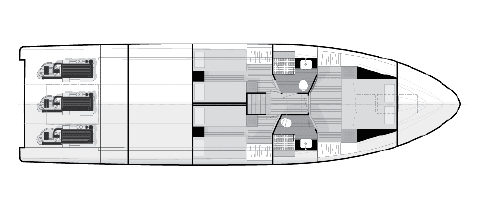
Her comfortable 30-knot cruise speed, according to Raymarine multifunction displays, was reached as the three power plants hummed along in symphonic synchronicity at 2,800 rpm. At this speed, her motors’ total fuel burn was just 39 gph, and considering her 740-gallon fuel capacity, the 54’s range is more than 500 nautical miles. That’s impressive, and she should appeal to cruisers who enjoy both short hops and long distances. If you want more speed, the 54 hit an average top end of 37.8 knots at 3,500 rpm with a total burn of 66 gph, offering a range of more than 310 nm.
Ducote — who says he’s seen the boat make 40 knots and is fascinated and enthusiastic about this vessel’s performance abilities — looked around the 54 as we ran her, removing any potential appendage that could impede her natural ability and optimal output. The transom flag was stowed, as were the very cool, multipurpose, metal and teak railings that serve as both the transom gate and deck chairs. Everything that wasn’t tied down was put away. She was as streamlined as possible. When he was done, we ran the boat to her top hop again and I saw an almost 1-knot uptick on the pins. She didn’t make 40 knots on this day, but I saw 38.3 once and was impressed because it speaks to the fact that the boat is being put together by someone as happily fanatical about her as a potential buyer would be.
| Specifications | Builder Supplied Number |
|---|---|
| LOA: | 59’4″ |
| BEAM: | 15’1″ |
| DRAFT: | 4’6″ |
| DISPL.: | 30,800 lb. (wet) |
| FUEL: | 740 gal. |
| WATER: | 185 gal. |
| DEADRISE: | n/a |
| ENGINES (std.): | 2 x 435 hp Volvo Penta IPS600 diesels w/ pod drives |
| ENGINES (tested): | 3 x 435 hp Volvo Penta IPS600 diesels w/ pod drives |
| PRICE AS TESTED: | $2,200,000 |
The attention to detail spent on this yacht’s exterior look and performance transitions into her interior, which was inspired by the New York-style loft, Ducote says. Teak wood abounds and warms up the space as light-toned fabrics and 360 degrees of glass, plus two sunroofs (salon and helm), allow light to flood in and add virtual volume to the main deck. The less-is-more approach to the 54’s exterior lines is also applied to the interior layout. From the salon’s aft portside L-shaped seating to the settees across, the Siemens-appliance-equipped aft galley and the dinette-style seating across from the helm, nothing seems oversized or intrusive.
I could see 10 or so guests enjoying a party here under the stars as they stare at the sky through those massive glass roofs, and everyone would have a place to sit with room to spare. If you require even more space, simply open the salon’s glass doors and the uninterrupted and expansive teak cockpit becomes a dance floor and gathering spot. Or, you could break out those transom-mounted chairs, raise the cockpit’s teak table and have an alfresco meal. Even more guests could sit and chat on the bench seating that defines the cockpit’s perimeter.
| RPM | KNOTS | GPH | dB(A) |
|---|---|---|---|
| 1000 | 7.5 | 2.5 | 63 |
| 1500 | 10.2 | 9.6 | 65 |
| 2000 | 17.6 | 17.5 | 66 |
| 2500 | 25.1 | 29.5 | 68 |
| 3000 | 32.1 | 46.5 | 72 |
| 3500 | 37.8 | 66.0 | 73 |
When hosting overnight guests, owners will have use of two mirror-image staterooms with side-by-side berths amidships belowdecks. Owners are accommodated in the forepeak master with queen berth and en suite head. Guests share a second head just forward of the portside stateroom. Both heads have (are you ready?) heated towel racks. Who doesn’t want to dry his face with a warm towel?
Yes, I was sold at heated towel rack. It may seem funny at first, but it’s a telling item because it provides insight into how the builder creates boats. Everything I noted on the 54, whether it was the multifunction deck chairs, well-organized interior layout or deep-freezer stowage under the salon sole, indicated the people behind the 54 aren’t just builders. They’re boaters. Her top-notch, carbon-fiber construction adds to Delta’s statement that the company is writing its own blueprint, not modifying something that came before. And if it’s true that the bold are rewarded, then the 54 IPS and her owners could see handsome dividends.
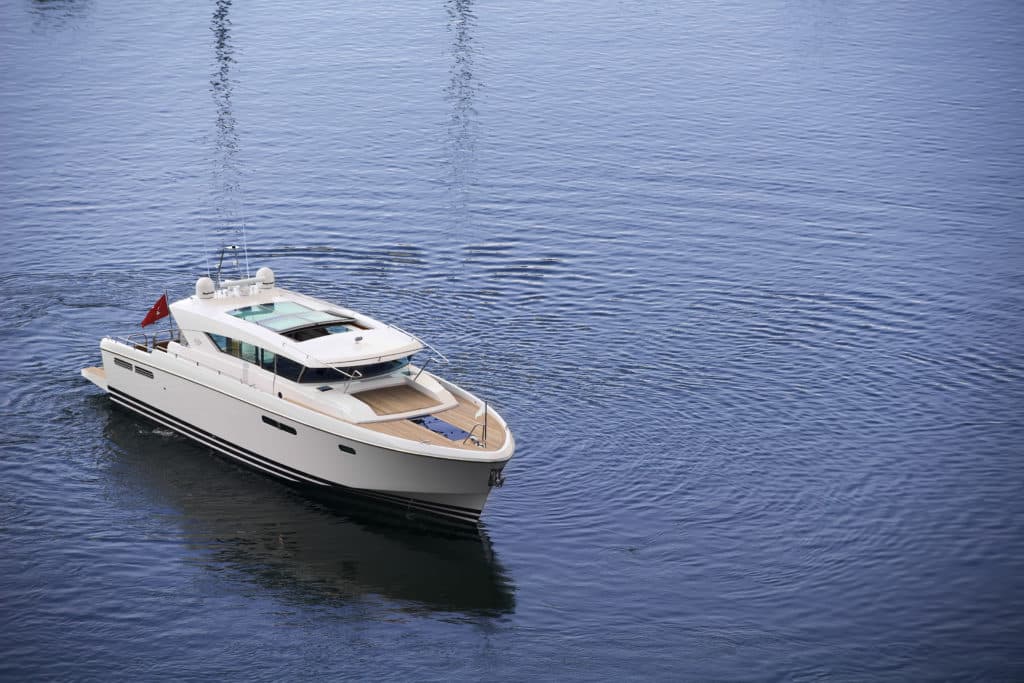
Livin’ Large
Delta Powerboats launched its brand 10 years ago with a 25-footer, and since then it’s expanded the portfolio to include models in the 30-, 40- and 50-foot range, including the 54 IPS we tested. Next, Delta is taking metric-growth steps with its new flagship 88 IPS. She is a literal big sister to the 54, which is the next-largest boat in the fleet. In spite of the 88’s size, many things remain the same, such as vacuum-infused, carbon-fiber construction and Volvo Penta diesels with pod drives. In fact, the four-stateroom 88 features triple Volvo Penta IPS1200s at 900 horsepower apiece. They reportedly propel the new yacht to an impressive top speed of 37 knots. Look for her to debut at the Cannes Yachting Festival and Monaco Yacht Show in September before crossing the sea to the United States.








